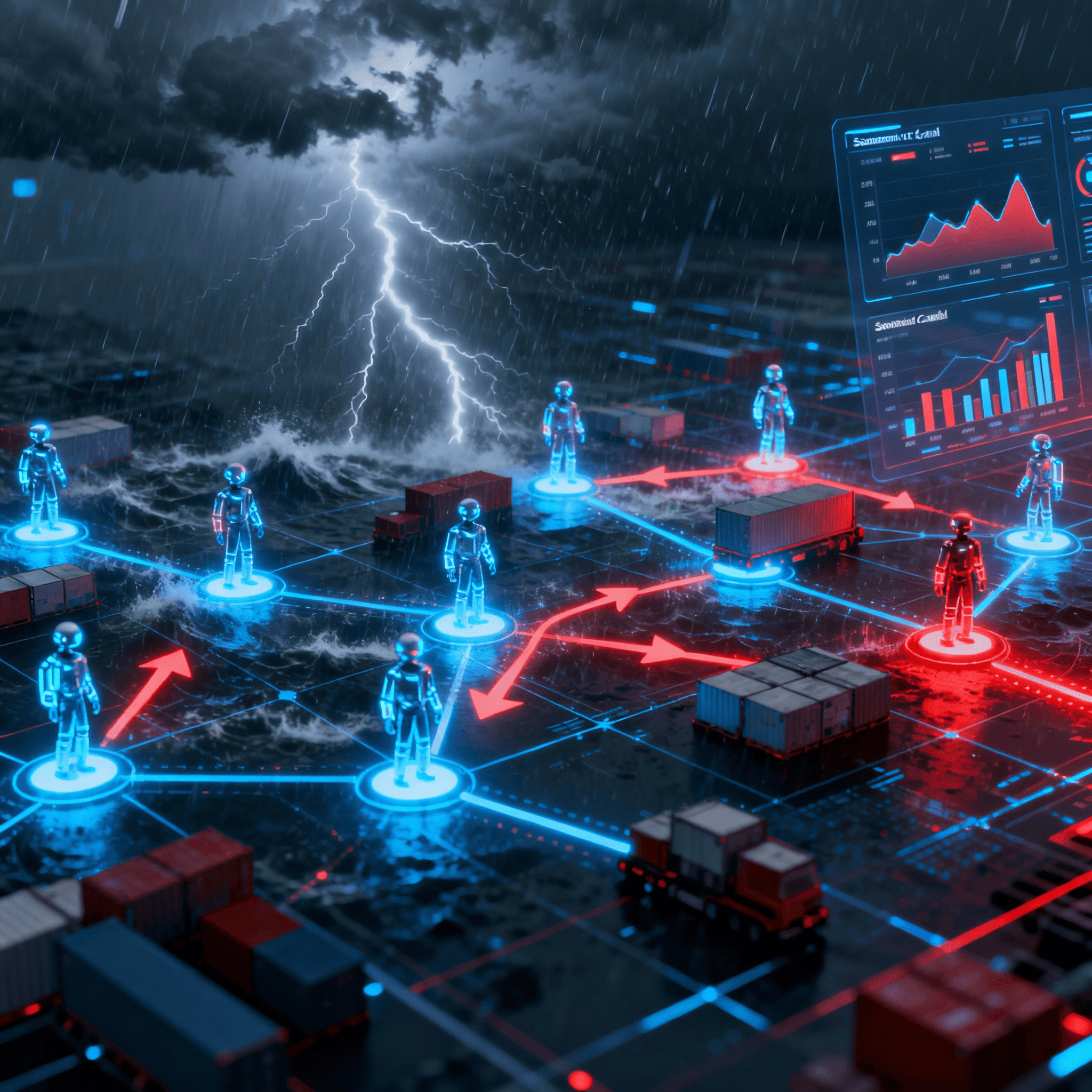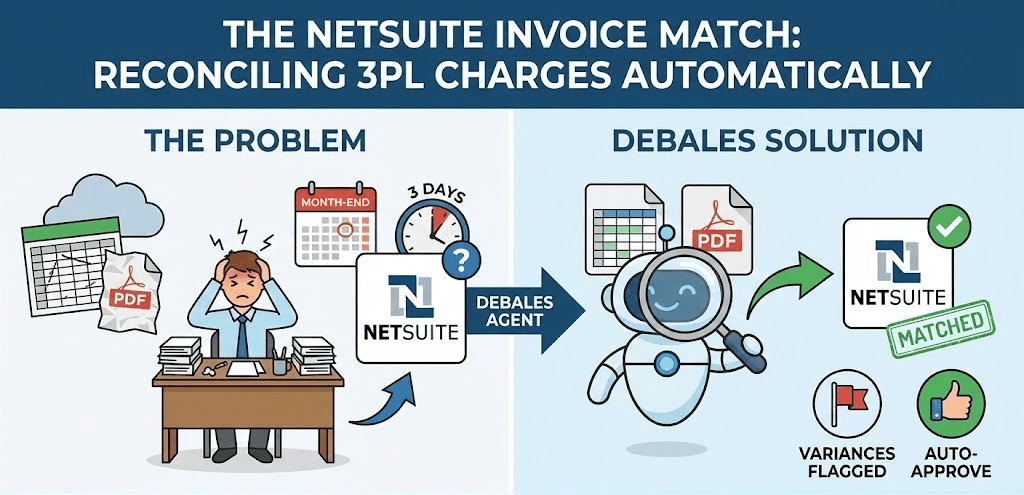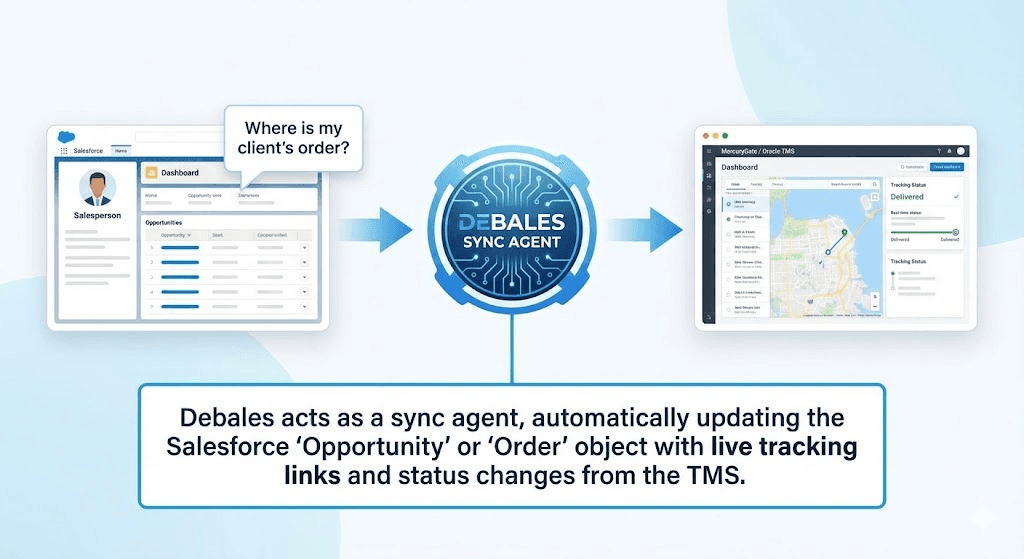AI Agents Digital Twins: Scenario Planning Supply Chain Simulation 2025
Friday, 24 Oct 2025
|
Stress-Testing Tomorrow: AI Agents for Scenario Planning and Supply Chain Simulation
Introduction: Preparing for the Unpredictable in a Volatile World
Supply chain disruptions cost the global economy $4 trillion annually, but AI agents integrated with digital twin technology can model thousands of scenarios to preempt 60% of these risks, reducing downtime by up to 40%. By creating virtual replicas of entire logistics networks, these systems simulate everything from port closures to geopolitical shocks, allowing executives to test responses without real-world consequences. For logistics CEOs, CXOs, and COOs, this fusion of AI agents and digital twins transforms reactive firefighting into proactive resilience, unlocking 20-30% efficiency gains in a market projected to grow at 26.6% CAGR through 2029.
This analysis delves into how AI agents leverage digital twins for scenario planning and simulation, drawing on McKinsey insights and real-world implementations from firms like Maersk and DHL. As 2025 brings escalating uncertainties—trade wars, climate events, and cyber threats—leaders using these tools achieve 95% prediction accuracy, outpacing laggards by 35% in recovery speed. Actionable frameworks here guide implementation, from initial modeling to ROI measurement, ensuring your operations withstand tomorrow's stresses today. In an era where agility defines dominance, stress-testing with AI isn't optional—it's the cornerstone of unassailable supply chains.
The Power of Digital Twins: Virtual Replicas for Logistics Resilience
Digital twins are dynamic virtual models mirroring physical assets, processes, or networks in real-time, ingesting IoT data to reflect conditions like warehouse throughput or fleet routes with 99% fidelity. In logistics, these twins simulate end-to-end operations—from supplier sourcing to last-mile delivery—enabling teams to visualize complexities without disrupting live flows. When paired with AI agents, twins evolve from static replicas to intelligent simulators, using ML to predict outcomes and optimize under stress.
The value lies in resilience: during the 2024 Red Sea crisis, firms with digital twins rerouted 80% of shipments proactively, cutting delays by 50% versus traditional methods. These systems integrate diverse data—weather APIs, market trends, and telemetry—to create holistic views, reducing blind spots that cause 30% of disruptions. For executives, starting with asset-level twins (e.g., a single DC) yields 15% visibility gains in 90 days, scaling to network-wide simulations for 25% cost reductions. As Gartner forecasts, 75% of large enterprises will use digital twins by 2027, making them essential for competitive moats.
Beyond visualization, digital twins facilitate what-if analysis, testing variables like tariff hikes without financial exposure. This proactive edge addresses the $1.5 trillion in annual disruption costs, positioning AI-enhanced twins as profit engines rather than cost centers.
AI Agents: Intelligent Orchestrators of Scenario Planning
AI agents act as autonomous decision-makers within digital twins, processing natural language queries to generate, run, and analyze simulations, compressing weeks of human work into minutes. These goal-oriented entities—powered by LLMs and optimization algorithms—decompose complex scenarios into executable steps, such as modeling a supplier shutdown's ripple effects across 10,000 SKUs. Unlike rule-based tools, agents learn from outcomes, refining models with reinforcement learning for 20% higher accuracy over time.
In scenario planning, agents aggregate data from ERP, TMS, and external sources, identifying trends like demand spikes from social sentiment. They then simulate responses—e.g., alternative routing or inventory shifts—evaluating impacts on KPIs like fill rates or emissions. IBM reports that agentic AI enables 50% faster planning cycles, as agents orchestrate multi-step workflows autonomously. For logistics leaders, deploying specialized agents (e.g., risk vs. optimization) creates adaptive systems, mirroring Amazon's use for 98% on-time rates.
The orchestration extends to sensitivity analysis, where agents test variable thresholds, revealing vulnerabilities like a 10% fuel price surge's 15% margin erosion. This intelligence turns data overload into actionable foresight, with 94% of adopters citing improved decision confidence.
Modeling Thousands of Disruptions: The Simulation Engine at Work
AI agents within digital twins model thousands of scenarios by running parallel simulations, using Monte Carlo methods to explore probabilistic outcomes like cyber attacks or natural disasters. The process begins with data ingestion: agents fuse historical logs, real-time telemetry, and external feeds to baseline the twin. They then parameterize disruptions—e.g., 500 variants of a port strike varying by duration and severity—generating 10,000+ iterations in hours.
Each simulation traces cascading effects: a factory downtime might trigger 25% stockouts, but agents test mitigations like air freight, quantifying trade-offs in cost and time. Advanced agents incorporate GenAI for creative scenarios, like tariff escalations from trade wars, assessing financial impacts with 85% precision. Databricks examples show networks stress-tested for Time-to-Recover (TTR), identifying recovery paths under 24 hours for 70% of events.
Executives can prioritize high-impact simulations: start with top-10 risks (e.g., supplier failures), scaling to full-spectrum modeling for 40% disruption mitigation. This engine not only forecasts but prescribes, auto-generating contingency plans with 30% better outcomes than manual efforts.
The scalability shines in multi-agent setups: one agent simulates, another optimizes responses, and a third monitors real-world convergence, ensuring 95% alignment. As disruptions evolve, continuous learning refines the twin, reducing false positives by 25% quarterly.
Real-World Applications: Lessons from Industry Pioneers
Maersk employs AI agents and digital twins to simulate Suez Canal blockages, preempting $300 million losses by diversifying routes 7 days ahead. Their system models 5,000 scenarios daily, integrating weather and geopolitical data for 92% accuracy in delay predictions. This approach cut recovery times by 60%, a benchmark for ocean carriers facing 2025 volatility.
DHL's Resilience360 platform uses agentic twins to stress-test air freight networks, simulating fuel shortages that revealed 20% capacity gaps, addressed via hybrid rail-air shifts. Agents conducted 2,000 iterations, optimizing for sustainability with 15% emission reductions. In e-commerce, UPS's ORION twin simulates peak surges, handling Black Friday volumes with 99% uptime by modeling labor and traffic variables.
Procter & Gamble's deployment reduced inventory by 25% through twin-based simulations of demand volatility, agents forecasting promo impacts across 100 countries. These cases illustrate 40% performance boosts during crises, as agents enable dynamic adaptations. For mid-tier firms, emulating via cloud platforms like AWS yields similar 20% gains without Maersk's scale.
Walmart's super agents integrate twins for store-level simulations, modeling weather-driven perishables risks to minimize 15% waste. This hyper-local approach underscores twins' versatility, from global trade to micro-fulfillment.
Building Your Framework: Actionable Steps for Implementation
Step 1: Assess and Map Your Digital Footprint
Conduct a maturity audit using enablers like data quality and IoT coverage, identifying twin-ready assets for 15% quick wins. Map the value chain—tiers 1-3 suppliers—to baseline simulations, linking to revenue streams for impact quantification. Allocate 10-15% of IT budgets to pilot a single node, like a key DC, achieving setup in 60 days.
Step 2: Deploy AI Agents for Simulation Orchestration
Integrate agents via APIs to TMS/ERP, starting with rule-based hybrids before full autonomy for 20% faster iterations. Train on historical disruptions, incorporating external APIs for real-time feeds, to model 1,000 scenarios initially. Use no-code platforms for non-tech teams, ensuring 50% adoption within quarters.
Step 3: Scale to Multi-Scenario Stress-Testing
Expand to network-wide twins, running parallel simulations with GenAI for novel risks like cyber threats, targeting 5,000+ runs daily. Embed ethical safeguards to mitigate biases, maintaining 99% data integrity. Pilot mitigations in sandboxes, refining with feedback for 30% resilience uplift.
Step 4: Integrate and Monitor for Continuous Evolution
Link simulations to control towers for automated alerts, achieving 70% autonomous responses. Quarterly audits measure convergence to reality, adjusting agents for 10% accuracy gains. This phased approach delivers 150% ROI by Year 2.
Measuring Success: KPIs and ROI Frameworks
Track simulation accuracy (target 90%), TTR (under 48 hours), and disruption mitigation (40% reduction) via dashboards. ROI models factor 30% cost savings from avoided stockouts, with payback in 12-18 months. Leaders benchmark against 20% throughput improvements, using agent audits for 250% long-term returns.
Customer metrics like NPS rise 15% from reliable ETAs, while ESG scores improve 25% via optimized routes. Ongoing monitoring ensures 50% autonomous execution by 2030.
Overcoming Challenges: Barriers and Proven Solutions
Data silos hinder 50% of twins; solve with federated platforms for seamless integration. Talent gaps affect 79%; counter with upskilling and vendor partnerships for 60% proficiency. Scalability issues in complex networks are addressed via cloud twins, handling petabytes without latency.
Ethical concerns like simulation biases require governance frameworks, reducing risks by 40%. Cost barriers—initial $500K for pilots—are offset by 100% ROI in Year 1. These solutions enable broad adoption, mirroring pioneers' success.
Simulate Your Supply Chain's Future with Debales.ai
Don't wait for the next disruption: Partner with debales.ai to build AI agent-powered digital twins, modeling scenarios for 40% risk reduction and 20% efficiency gains.
Conclusion: Future-Proofing with Simulation Supremacy
AI agents and digital twins enable stress-testing of thousands of scenarios, preempting disruptions and driving 30-40% operational excellence in logistics. By modeling the unmodelable, executives secure resilience, ROI, and market leadership amid escalating volatilities. As 2030 approaches autonomous dominance, those simulating tomorrow today will thrive.


